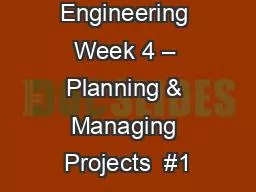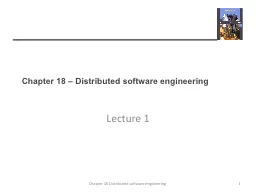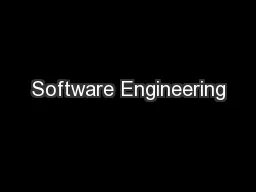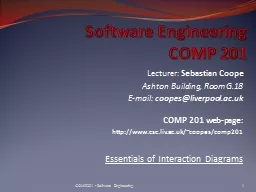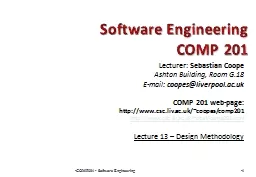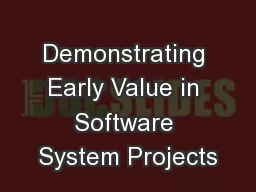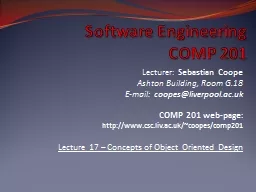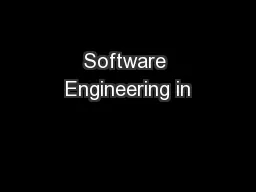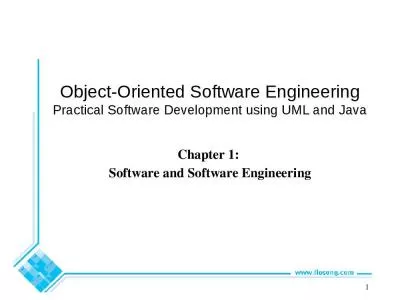PPT-Software Engineering Week 4 – Planning & Managing Projects #1
Author : accouther | Published Date : 2020-07-01
AA Gde Bagus Ariana ST gungarianayahoocom httpgungarianawordpresscom Management activities Project planning Project scheduling Critical Path Method CPM Program
Presentation Embed Code
Download Presentation
Download Presentation The PPT/PDF document "Software Engineering Week 4 – Planning..." is the property of its rightful owner. Permission is granted to download and print the materials on this website for personal, non-commercial use only, and to display it on your personal computer provided you do not modify the materials and that you retain all copyright notices contained in the materials. By downloading content from our website, you accept the terms of this agreement.
Software Engineering Week 4 – Planning & Managing Projects #1: Transcript
Download Rules Of Document
"Software Engineering Week 4 – Planning & Managing Projects #1"The content belongs to its owner. You may download and print it for personal use, without modification, and keep all copyright notices. By downloading, you agree to these terms.
Related Documents

